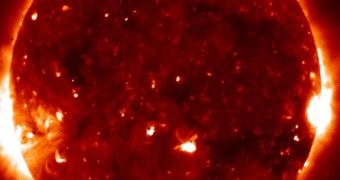Established astronomical knowledge had it until recently that the number of sunspots on the surface of the Sun was a clear indicator of the intensity of solar winds, and therefore of the dangers that were in store for the Earth. Solar winds are known to be extremely disruptive towards our electrical systems. They can easily fry transformers and wires, and have the ability to destroy satellite networks and to jeopardize the International Space Station, as well as communications with our deep-space probes.
According to ABC News, experts in the United States have determined that the planet has been bombarded with similar amounts of solar winds over the last year as the years before, which is not in tune with the theory. The Sun was unusually quiet last year, and therefore, according to estimates, it should not have emitted such intense solar winds. Astronomers from the National Center for Atmospheric Research (NCAR) and the University of Michigan (UM) were behind the new study.
“The Sun continues to surprise us. The solar wind can hit Earth like a fire hose even when there are virtually no sunspots,” NCAR High Altitude Observatory expert Dr. Sarah Gibson, who has also been the lead author of the new paper, says. Details of the finds appear in the latest issue of the respected Journal of Geophysical Research. Scientists from the US National Oceanic and Atmospheric Administration (NOAA) and NASA also contributed to the investigation.
The simplest way to assess the amount of solar radiation battering the Earth is to look at the auroras that form at our planet's poles. As solar winds and jets hit the protective shield that is our magnetosphere, charged particles begin to flow along magnetic lines, creating the light shows. The brightness and intensity of these phenomena can easily hint at the power with which they were emitted from the Sun. “The new observations from last year are changing our understanding of how solar quiet intervals affect the Earth and how and why this might change from cycle to cycle,” UM expert Janet Kozyra, the co-author of the investigation, adds.

 14 DAY TRIAL //
14 DAY TRIAL //